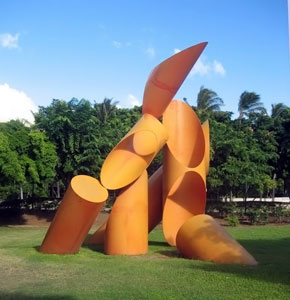The Artist in His Studio, foreword by James Thrall Soby, Viking Press (New York), 1960, revised edition, Random House (New York), 1988
Alexander Semeonovitch Liberman (September 4, 1912 – November 19, 1999) was a Russian-American magazine editor, publisher, painter, photographer, and sculptor. He held senior artistic positions during his 32 years at Condé Nast Publications.
Contents
[hide]Life and career[edit]
When his father took a post advising the Soviet government, the family moved to Moscow. Life there became difficult, and his father secured permission from Lenin and the Politburoto take his son to London in 1921.
Young Liberman was educated in Russia, England, and France, where he took up life as a "White Émigré" in Paris.
He began his publishing career in Paris in 1933–36 with the early pictorial magazine Vu, where he worked under Lucien Vogel as art director, then managing editor, working with photographers such as Brassaï, André Kertész, and Robert Capa.[6]
After emigrating to New York in 1941, he began working for Condé Nast Publications, rising to the position of editorial director, which he held from 1962-1994.
Only in the 1950s did Liberman take up painting and, later, metal sculpture. His highly recognizable sculptures are assembled from industrial objects (segments of steel I-beams, pipes, drums, and such), often painted in uniform bright colors. In a 1986 interview concerning his formative years as a sculptor and his aesthetic, Liberman said, "I think many works of art are screams, and I identify with screams."[7] Prominent examples of his work are in the collections of the Metropolitan Museum of Art, Storm King Art Center, Hirshhorn Museum and Sculpture Garden, Pyramid Hill Sculpture Park, Tate Gallery, and the Guggenheim Museum. His massive work "The Way", a 65 feet (20 m) x 102 feet (31 m) x 100 feet (30 m) structure,[8] is made of eighteen salvaged steel oil tanks, and became a signature piece of Laumeier Sculpture Park,[9] and a major landmark of St. Louis, Missouri.[10][11]
He was married briefly to Hildegarde Sturm (August 25, 1936), a model and competitive skier. His second wife (since 1942), Tatiana Yacovleff du Plessix Liberman (1906–1991), had been a childhood playmate and baby sitter. In 1941, they escaped together from occupied France, via Lisbon, to New York. She had operated a hat salon in Paris, then designed hats for Henri Bendel in Manhattan. She continued in millinery at Saks Fifth Avenue where she was billed as "Tatania du Plessix" or "Tatania of Saks", until the mid-1950s.[12] In 1992, he married Melinda Pechangco, a nurse who had cared for Tatiana during an early illness. His stepdaughter, Francine du Plessix Gray, is a noted author.
Alexander Semeonovitch Liberman was a Russian-American magazine editor, publisher, painter, photographer, and sculptor. He held senior artistic positions during his 32 years at Condé Nast Publications. Wikipedia
Born: September 4, 1912, Kiev, Ukraine
Died: November 19, 1999, Miami, Florida, United States
Spouse: Melinda Pechangco (m. 1992), Tatiana Yakovleva du Plessix Liberman (m. 1942), Hildegarde Sturm (m. 1936)
Employers: Vogue (1943–), Condé Nast(1960–1994)
| University School, Hastings, Sussex, England, 1921-22 St. Pirans School, Maidenhead, Berkshire, England, 1923-24 Ecole des Roches, 1924-27 Sorbonne, 1927-30, philosophyand mathematics, studied painting, under André Lhote, Paris, 1931 Ecole Speciale d'Architecture, Paris, 1931-32 (under Auguste Perret) École des Beaux-Arts in Paris, 1932-33 | |
| Occupation | magazine editor, publisher painter, photographer, sculptor |
| Employer | Vogue magazine (1943-) Condé Nast Publications (1960-1994) |
| Home town | New York Miami |
| Title | Editorial Director |
| Spouse(s) | Hildegarde Sturm (1936-??) Tatiana Yacovleff du Plessix (1942-1991) Melinda Pechangco (1992-1999) |
| Children | Francine du Plessix Gray stepdaughter, not adopted |
| Parent(s) | Semeon Isayevich Liberman, a timber expert Henriette Pascar, a theatrical dilettante |
| Notes | |


沒有留言:
張貼留言